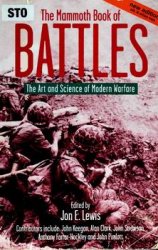Melancholics and young women suffering from green-sickness were not the only ones
whose outer body revealed their inner state, for humoral theory explained physical
health and illness as well as one’s mental state. Newer ideas about anatomy that developed
in the seventeenth century also connected the mind and the body.
Learned writers, fi rst Andreas Vesalius and then many others, criticized the prevailing
Galenic understanding of anatomy and physiology. In several works, the English
anatomist and royal physician William Harvey (1578–1657) demonstrated that the veins
and arteries are one system, with the same blood being pumped throughout the body
by the heart. Based on dissections, experimental proof, and logical argument, Harvey
explained the workings of the heart muscles, the function of the valves in the veins, and
the path of blood through the heart. He saw blood as even more important than it had
been in the Galenic system, however, identifying it as animate and linking it with the
soul. Harvey also viewed semen as powerful, and suggested that an egg found inside a
female could become fertilized at a distance without physical contact, in the same way
that magnets exerted their energy across space.
Galileo Galilei (1564–1642) and Pierre Gassendi (1592–1655) studied the physical
principles of bodily processes: how the pores secreted, how the mouth and stomach
digested, how blood fl owed through the blood vessels. They, and others, thought about
the body in mechanical terms: as, in Galileo’s terms, an assemblage of small machines.
Just as machines need oil to prevent friction and pumps need a free fl ow of liquid to
work properly, they reasoned, the body needed a free fl ow of various fl uids to maintain
good health. These were now observable fl uids such as blood, digestive juices,
and glandular secretions rather than the Galenic four humors, however, with illness
described in terms of blockages, restrictions, and obstructions, rather than imbalance.
Later medical writers studied respiration, with Joseph Priestley (1733–1804) and
Antoine-Laurent Lavoisier (1743–94) identifying the “vital air” carried by the blood as
oxygen, necessary for both life and combustion.
The work of anatomists and medical writers was made easier by improvements in
the microscope undertaken by Dutch lens-makers, especially Anton von Leeuwenhoeck
(1632–1723). Leeuwenhoeck’s microscope allowed him to see single blood cells circulating
through capillaries (an action that Harvey had not been able to explain) and spermatozoa
(what he called “animalcules”) in semen, demonstrating that something physical
was clearly responsible for fertilization. The latter discovery led Leeuwenhoeck to argue
that each sperm was the seed of an individual, and that sperm contained the full formative
structure of the embryo, including its sex. This “spermatic” view of embryology was
countered by “ovists” such as the Swiss physiologist Albrecht von Haller (1708–77), who
thought that the embryo-in-miniature existed preformed in the female ovum. Ovists
were often ridiculed by the male scientifi c community, however, and were limited by the
fact that the mammalian ovum had not yet been defi nitively identifi ed. Both of these
“preformationist” positions also had to explain how the embryo’s future children could
be contained within it, and then that embryo’s within it ad infi nitum, a puzzle that led
back, in both serious and satirical works, to the ovaries of Eve. This conundrum contributed
to a recognition that somehow both parents must be involved, but not until the
identifi cation of the ovum in 1827 – a remarkably late date given its size relative to that of
spermatozoa – would the modern view of conception begin to emerge.
The mechanical view of the body as a system of hydraulic and pneumatic machines
was opposed in the eighteenth century by “vitalists,” some of whom asserted the importance
of the soul as a “life-force” or “life-principle,” and others of whom located this
life-force in the body itself. The latter group often based their arguments on research
on the nervous system and on the ability of plants and some animals (such as starfi sh)
to regenerate body parts that had been severed. Good health, for these vitalists, was a
matter of stimulating or “exciting” the nervous system and allowing muscles to freely
contract and expand.
Some anatomical research was conducted by individuals with positions at university
medical schools, but in general the critique of Galen did not translate immediately into
a rejection of the notion of humors in the training or practice of physicians. The older
humoral notion of the body’s physiology could also be combined with newer ideas in
eclectic ways, with anatomical theorists blending and balancing mechanism, vitalism,
and other theories in their attempts to explain how the body operated.
The treated body: medicine and public health
Medicine as practiced was even more diverse than medical theory, in terms of both the
approaches of medical practitioners and the range of practitioners available, though all
practitioners regarded their work as important for individuals and for society at large.
The highest-status – and highest-paid – medical practitioners were university-trained
physicians, whose course work remained largely theoretical and all in Latin until the
eighteenth century, when a few daring professors began to lecture in the vernacular.
Physicians were in charge of the internal body, so their advice was sought for illnesses
that appeared to come from within, such as fevers.
After the fourteenth-century outbreaks of the plague and of other epidemic diseases,
towns and cities, fi rst in northern Italy and then elsewhere, appointed offi cial city physicians
or boards of medical commissioners. These individuals were charged with developing
and enforcing measures that would limit the spread of disease – quarantining
infected houses or streets, disposing of corpses and the belongings of the dead, prohibiting
public gatherings, and setting out cordons sanitaires , “sanitary cordons” around
uninfected areas. At fi rst these commissions disbanded once the threat posed by an
epidemic had passed, but by the sixteenth century northern Italian and German cities
often made these positions permanent, and charged physicians with the routine
supervision of public health. City physicians and commissions developed (and tried
to enforce) sanitary regulations about the disposal of waste, supervised other medical
practitioners, and investigated reports of new diseases. In the seventeenth century,
some cities, territories, and states expanded the role of these boards – often called a
collegium medicum – to include developing and offering a licensing examination for
any physician who wanted to practice in the area. Offi cials in centralizing states slowly
came to regard a large and healthy population as essential to the well-being of the state,
and called for the keeping and study of better vital statistics, including birth, death, and
morbidity rates, as a basis for health policies.
Hospitals were increasingly viewed as important institutions for maintaining public
health. In the centuries before 1450, hospitals were primarily charitable institutions
whose main function was caring for the spiritual and physical needs of the ill, infi rm,
mentally ill, or elderly poor; they gave such people beds, food, and a (relatively) clean
place to die. Many cities also had leper- or pest-houses for those with contagious diseases;
with the advent of syphilis in the 1490s, special “pox-houses” were set up in German
and Italian cities for those who were infected with this new disease. Medieval hospitals
and pest-houses were often small privately endowed institutions that were ineffi ciently
run. City governments, fi rst in Italy and then elsewhere, gradually consolidated these
into large general hospitals over which they exerted stricter oversight and control. Like
the poor in general, residents in these hospitals were often divided into “worthy” and
“unworthy.” Care for the latter group – which included vagrants and beggars who were
sometimes rounded up off the streets against their will – involved enforced labor and
strict moral discipline. Even the “deserving” poor, such as widows and orphans, might
be expected to work as much as they could while in the hospital, however, for work was
viewed as spiritually fulfi lling, and thus as contributing to the healing process.
Treatment for illness was always a part of hospital care, and during the seventeenth
century mercantalist ideas about the importance of a growing and productive population
led to more attention to strictly medical issues within hospitals. Regular rounds in
hospitals examining and treating patients gradually became a part of medical training,
with physicians recording their clinical experiences in casebooks. Medical reformers
emphasized the role that hospitals could play in research and the rehabilitation of workers
and soldiers. In Britain, philanthropic “alliances against misery” began to open voluntary
hospitals in the middle of the eighteenth century, describing their function as the
maintenance of public health and vigor as well as the treatment of individual illness.
The impact of public health measures and improvements in hospitals was limited,
however. London, Genoa, and other cities saw devastating outbreaks of the plague in
the middle of the seventeenth century, with smaller outbreaks continuing in western
Europe until the early eighteenth and in eastern Europe until the later eighteenth century.
Even after the plague had disappeared – and the reasons for this are not entirely
clear – infectious diseases such as cholera still killed huge numbers of people, especially
in crowded cities. Not until the early twentieth century would anyone who was not
poor generally enter a hospital, for they remained places most people exited feet fi rst.
SOURCE 22 Lady Mary Wortley Montagu on inoculation against smallpox
Innovations in medical treatment often came
through individuals who learned through observation,
not formal training. Local medical practitioners
in several parts of the world, including
the Ottoman Empire, West Africa, and probably
China, recognized that survivors of smallpox did
not contract the disease again. They thus took
pus from the sores of a smallpox sufferer and intentionally
scratched it into the skin of a healthy
person, a process called variolation (from variola,
the Latin term for smallpox), or inoculation. That
person became infected with what was hoped
was a mild case of the disease, and was thus
protected, though it was diffi cult to determine
the proper dosage, and some inoculated people
died. The Royal Society of London heard about
this practice in the early eighteenth century, but
it got its best boost from Lady Mary Wortley
Montagu (1689–1762), an aristocratic English
woman whose husband was sent as the British
ambassador to the Ottoman Empire in 1717.
Lady Montagu had been scarred by smallpox as
a young woman, and was intensely interested
when she watched Turkish women inoculate
their children, writing about this in a letter to a
friend:
I am going to tell you a thing, that will make
you wish yourself here. The small-pox, so fatal,
and so general amongst us, is here entirely
harmless, by the invention of engrafting,
which is the term they give it. There is a set
of old women, who make it their business to
perform the operation, every autumn, in the
month of September, when the great heat is
abated. People send to one another to know
if any of their family has a mind to have the
small-pox; they make parties for this purpose,
and when they are met (commonly fi fteen or
sixteen together) the old woman comes with
a nut-shell full of the matter of the best sort
of small-pox, and asks what vein you please
to have opened. She immediately rips open
that you offer to her, with a large needle
(which gives you no more pain than a common
scratch) and puts into the vein as much
matter as can lie upon the head of her needle,
and after that, binds up the little wound
with a hollow bit of shell, and in this manner
opens four or fi ve veins. The Grecians have
commonly the superstition of opening one
in the middle of the forehead, one in each
arm, and one on the breast, to mark the sign
of the Cross; but this has a very ill effect, all
these wounds leaving little scars, and is not
done by those that are not superstitious, who
chuse to have them in the legs, or that part
of the arm that is concealed. The children
or young patients play together all the rest
of the day, and are in perfect health to the
eighth. Then the fever begins to seize them,
and they keep their beds two days, very
seldom three. They have very rarely above
twenty or thirty [smallpox sores] in their
faces, which never [leave a permanent] mark,
and in eight days time they are as well as
before their illness. Where they are wounded,
there remains running sores during the
distemper, which I don’t doubt is a great relief
to it. Every year, thousands undergo this
operation, and the French Ambassador says
pleasantly, that they take the small-pox here
by way of diversion, as they take the waters
in other countries. There is no example of
any one that has died in it, and you may
believe I am well satisfi ed of the safety of
this experiment, since I intend to try it on my
dear little son. I am patriot enough to take
the pains to bring this useful invention into
fashion in England, and I should not fail to
write to some of our doctors very particularly
about it, if I knew any one of them that I
thought had virtue enough to destroy such a
considerable branch of their revenue, for the
good of mankind. But that distemper is too
benefi cial to them, not to expose to all their
resentment, the hardy wight that should
undertake to put an end to it. Perhaps if I
live to return, I may, however, have courage
to war with them.
Montagu did have both of her children inoculated,
and on returning to England wrote essays in
popular journals and letters to powerful individuals
urging the practice. Most religious and medical
authorities opposed inoculation, however, and
many of the general public were suspicious. At
the very end of the eighteenth century, Edward
Jenner (1749–1823), an English surgeon (his
medical degree was honorary, and was awarded
to him when he was sixty-four), learned from
local farmers that people who had had cowpox
(vaccinia) were immune to smallpox. Jenner
experimented with cowpox inoculations –
he called them vaccinations – and these were
largely successful, though the practice was not
widely accepted until after Jenner’s death.
From Lady Mary Wortley Montagu, Letters of the Right
Honourable Lady M–y W–y M–e: Written During her
Travels in Europe, Asia and Africa… , vol. I (Aix: Anthony
Henricy, 1796), pp. 167–9; letter 36, to Mrs. S. C.
from Adrianople, n.d.
University-trained physicians were expensive, and hospitals were dangerous, so people
more regularly consulted with surgeons for various types of ailments. In theory, surgeons
were to treat the outer body and physicians the inner, but in practice surgeons often
treated illnesses such as syphilis or cancerous tumors as well as externally visible problems.
Before 1700 surgeons were generally trained through a guild system rather than
at universities, so they did not hold an MD degree and were not referred to as “doctor.”
They were trained to use knives and other instruments in their practice – something that
university-trained physicians rarely did – and so were often grouped together in a guild
with barbers, who might also do routine bloodletting along with cutting hair. Though
the occasional dissection that university medical students observed as part of their training
was usually done by a surgeon (with the professor lecturing as the surgeon did the
actual cutting to reveal body parts), the training of surgeons did not involve regular dissections.
The status of surgery improved in the eighteenth century, however, in keeping
with ideas that practical experience and experimentation were effective teaching tools.
Surgeons were given more training, sometimes in hospitals and sometimes in special surgical
academies, and surgery was added as a course of study in some medical schools.
Along with physicians and surgeons, apothecaries regularly provided medical advice
along with medications made of herbs, minerals, metals, salts, and many other
ingredients. Apothecaries were trained through apprenticeship, and were supposed to
dispense drugs only on the advice of a physician, but in practice they often acted on
their own. Their medications included, and often mixed, ingredients understood to
heal in different ways: some “sympathetically” mimicked the illness, such as the spotted
plants prescribed to cure measles; others worked astrologically, by drawing on the
power of an alignment of the stars and planets; others operated through alchemical
processes, such as the mercury, sulfur solutions, or drinkable gold ( aurum potabile )
that contained the secret “elixir of life”; others worked only when certain phrases were
repeated or prayers said as they were ingested. Most ingredients, especially those that
poorer people could afford, were natural plant and mineral products whose effects had
been discovered over centuries of trial and error.
Knowledge about such treatments might just as easily be handed down from father to
son, or mother to daughter, as through guild training, so that much medical treatment
was carried out by people with no formal training, but simply a reputation for effectiveness.
Physicians, surgeons, and apothecaries sometimes objected to, in their words,
these “quacks and charlatans” practicing medicine; these objections had more force
once formal licensing procedures were instituted, with city councils and other governing
bodies ordering unlicensed practitioners to stop dispensing medicine, or at least
to stop charging if they did so. The complaints of professionals could not stop people
from treating illness in their own homes, of course. Cookbooks, herbals, and household
guides contained huge numbers of recipes for the treatment of everything from colds to
the plague, and home remedies were the most common way of handling illness.




 World History
World History









